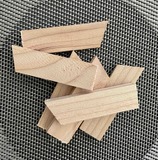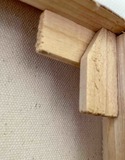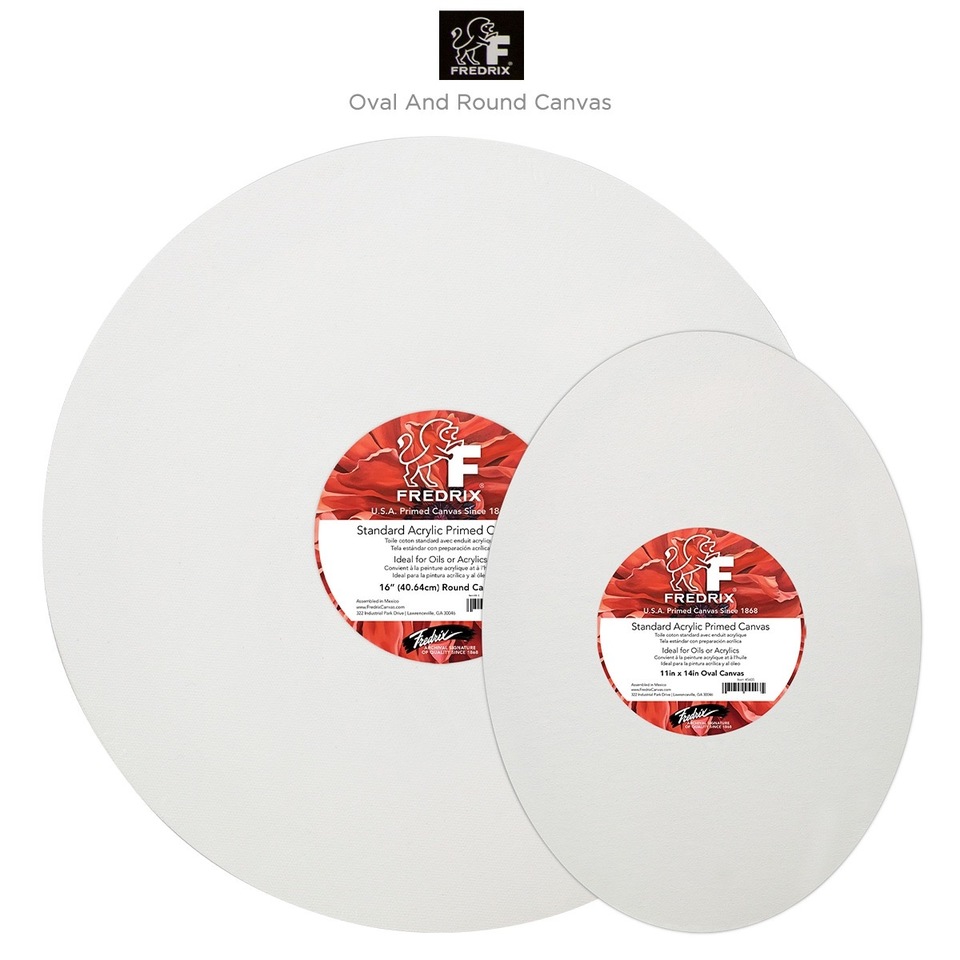Canvas Choices: Exploring the Unique Relationship Between Paint and Surface
The type of canvas you use will depend on the type of paint you use. Water-colour artists mainly use paper (There is a type of canvas paper for this but most prefer to use a smoother surface than that.) Canvases that are used for oil and acrylic painting come in many types but generally Cotton duck is used for acrylic painting, while linen and cotton duck is used for oil.
If you don’t want to frame your work, use a gallery wrap type canvas where the canvas itself stretches around to the back of the frame so that no staples are visible. This way you can paint on the edges of the canvas as well. This makes the painting look finished even without a frame. At present it is a fashionable look and often a frame can detract from what’s going in the painting so its best to leave it off.
Canvas board, or canvas glued across cardboard, is not acid-free and warps easily. It is not used for art that is meant to last longer than a few months and needs to be framed to be hung so is actually a more costly support..
Did you know that canvas and linen are made from plant matter. They both offer considerably different qualities and are made from different types of plants.
Linen is made from the flax plant and is a robust light brown material which is considerably durable. It was used exclusively before the introduction of cotton canvas in the early twentieth century and is well suited to the application of oil paint. Although cotton canvas is more popular today, some professional artists prefer to use linen particularly when working with oil paints.
Cotton Duck comes from the cotton plant. It is by far the most common choice of canvas and it is considerably less expensive. It has a more even mechanical weave and stretches with more elasticity than linen. Cotton is well suited for the use of acrylic paints which are of the preferred by artists because the convenience provided due to the rapid drying times. There are many options available and prices vary depending on the quality.
Typical canvas duck is constructed with what is known as a plain weave, meaning that the threads criss-cross each other to form a simple checkerboard pattern. The plain weave is both easy to construct and very strong, especially when made with heavyweight threads. Canvas duck is often reinforced with two warp threads to every weft thread, creating a characteristic stiff, heavy feel.
Most textile manufacturers grade their canvas duck using a widely standardised numbering system. Duck is graded by weighing a sheet of a specific size; the lighter the fabric, the higher the grade…..and no, no ducks were used or abused to make them! The word duck in this context comes from the Dutch word ‘doek’ which refers back to linen canvas. At some stage in translation it became ‘duck’ in English.
What are Canvas Keys?
Those little pieces of wood that you find atached to the back of a canvas, what are they you ask? They are called canvas tightening keys, but you might hear them referred to as canvas wedges or even stretcher keys. They are usually made of wood but some cheaper brands have plastic ones and although just seem an unnecessary thing they can be be very useful, They are made to strengthen the canvas and push it out a fraction if it begins to sag at all by wedging them in the corners at the back where there are small gaps, sometimes you will need to give them a tap with a hammer. You layer them across one another like in the image below.
 canvas keys
canvas keys  overlap in the corner at the back
overlap in the corner at the back
How To Prepare Un-primed Canvas for Painting
Most stretched canvas comes ready primed and you can start painting on it straight away. However, cotton-duck - often supplied on a roll - may be un-prepared and would have to be primed to prevent the paint from soaking into the material.
Preparing a canvas to be painted on is known by artists as 'grounding'. The most common type of grounding primer is 'gesso', which I talk about in yesterdays post on mediums. Oils or acrylic paints will adhere to almost any surface, but it is important to remember that the paint will only be as good as the foundation that you lay for it. If you apply a coat of gesso and you find that it is beading up then you probably have a surface that is dirty or is not compatible with the primer. Cleaning the material with turps, mentholated spirits or sanding the surface lightly; and then using a coat of clear sealer, may prevent this from happening.
For a particularly smooth painting surface try applying coat after coat of gesso; sanding back lightly between each layer until you reach the desired surface texture. Alternately you can use board but that’s another story all together.
Posted: Friday 15 January 2010
